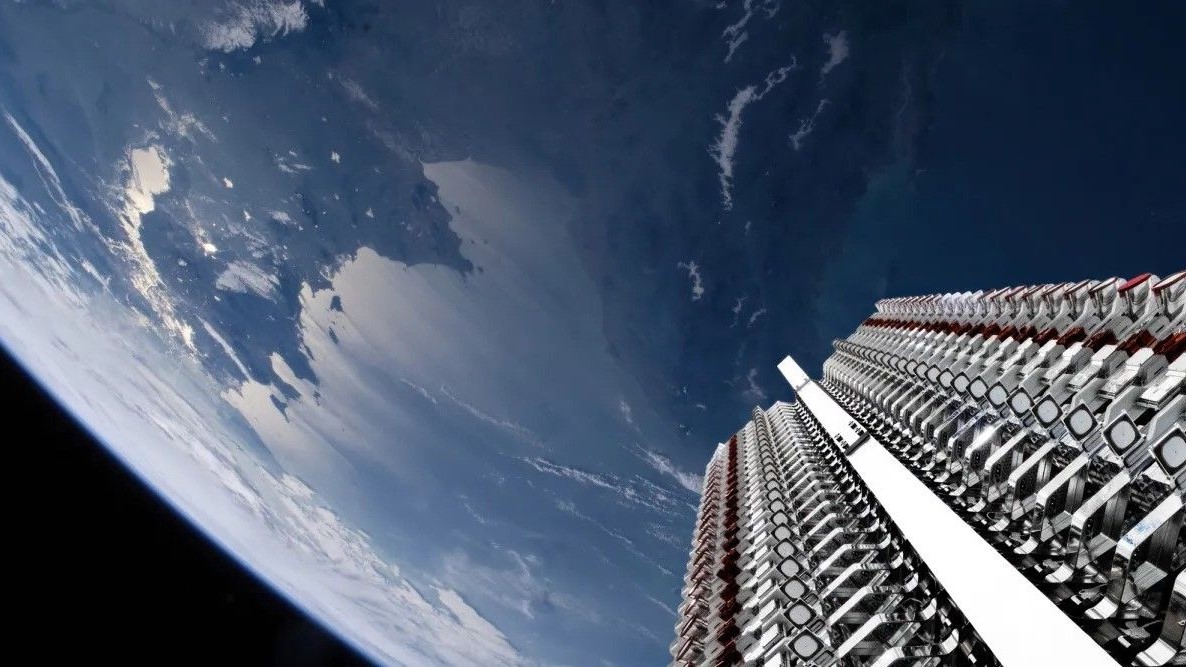
Starlink, a project by SpaceX, aims to provide high-speed internet to remote and underserved areas globally. Conceived in 2015, it has rapidly evolved, launching over 4,000 satellites into low Earth orbit by 2024. The goal is to deploy 42,000 satellites, ensuring global coverage with speeds up to 1 Gbps and low latency around 20-30 ms. This ambitious initiative promises to bridge the digital divide, offering reliable internet where traditional infrastructure fails. Despite challenges like space debris and regulatory hurdles, Starlink's innovative technology and significant investment make it a game-changer in global connectivity.
Key Takeaways:
- Starlink, a project by SpaceX, aims to provide global internet coverage using a constellation of satellites. It promises high-speed internet, low latency, and potential applications across various sectors, from education to business operations.
- With over 4,000 satellites launched and plans for 42,000 more, Starlink is set to revolutionize internet access worldwide. It faces challenges but offers hope for bridging the digital divide and stimulating economic growth in underserved regions.
The Birth of Starlink
Starlink, an ambitious project by SpaceX, aims to provide global internet coverage through a constellation of satellites. Let's dive into some fascinating facts about this groundbreaking initiative.
- Early Concept: Starlink's concept was first proposed to the Federal Communications Commission (FCC) in 2015.
- Funding: Google and Fidelity Investments contributed over $1 billion to fund the project.
Starlink's Objectives
The goals of Starlink are both ambitious and transformative, aiming to change how we access the internet.
- Global Coverage: Starlink aims to provide internet access worldwide, especially in remote areas.
- Speed and Reliability: The service promises high-speed internet with low latency, rivaling traditional fiber-optic connections.
The Technology Behind Starlink
The technology powering Starlink is as fascinating as its goals. From satellite design to communication methods, here's what makes it tick.
- Satellite Design: Each satellite weighs about 227 kilograms (500 pounds) and measures 1.1 meters (3.6 feet) in length.
- Solar Panels: Solar panels power the satellites, essential for their operation in space.
- Communication: Phased array antennas enable satellites to communicate with each other and ground stations.
Launches and Deployment
Deploying thousands of satellites into space is no small feat. Here's how SpaceX is making it happen.
- First Launch: The first 60 Starlink satellites launched on May 23, 2019, aboard a Falcon 9 rocket.
- Rapid Deployment: Thousands of satellites have been launched into low Earth orbit (LEO) since then.
- Orbital Positioning: Satellites are placed in a polar orbit at an altitude of approximately 550 kilometers (342 miles).
The Growing Satellite Constellation
Starlink's constellation is growing rapidly, with plans for even more satellites in the future.
- Total Satellites: Over 4,000 satellites have been launched as of 2024.
- Future Plans: SpaceX aims to deploy a total of 42,000 satellites for global coverage.
Ground Stations and User Equipment
Ground stations and user terminals are crucial for connecting users to the Starlink network.
- Network Expansion: Ground stations are being built worldwide, including in the U.S., Canada, and Europe.
- User Terminal: A compact, user-friendly terminal is required to connect to the network.
- Cost: The user terminal's cost is competitive with other internet service providers (ISPs).
Service Plans and Performance
Starlink offers various service plans and promises impressive speed and performance.
- Subscription Model: The service operates on a subscription-based model with different plans for various needs.
- Data Limits: Users will have data limits to manage bandwidth usage.
- Speed: Promises speeds of up to 1 Gbps (gigabit per second).
- Latency: Expected latency is low, around 20-30 milliseconds, suitable for video streaming and online gaming.
Environmental and Regulatory Considerations
Starlink faces several environmental and regulatory challenges, which SpaceX is actively addressing.
- Space Debris: Measures are in place to minimize space debris, including de-orbiting satellites at the end of their life cycle.
- Orbital Debris Mitigation: SpaceX is developing technologies to mitigate orbital debris.
- FCC Approval: Received FCC approval in 2019 to deploy its satellite constellation.
- International Regulations: Compliance with international regulations is required for satellite operations.
Competitors and Challenges
Starlink isn't the only player in the satellite internet game. It faces competition and various challenges.
- OneWeb: Another company working on a satellite internet constellation, backed by SoftBank.
- Amazon’s Kuiper Systems: Amazon is developing its own satellite internet constellation, Kuiper Systems.
- Interference: Significant challenges include interference from other satellite constellations and terrestrial communication systems.
- Regulatory Hurdles: Compliance with local laws and regulations in various countries is necessary.
Public Perception and Economic Impact
Public interest and economic implications of Starlink are noteworthy.
- Concerns Over Light Pollution: Measures have been implemented to reduce light pollution caused by bright satellites.
- Public Interest: Significant public interest due to its potential to bridge the digital divide.
- Job Creation: Expected to create jobs in manufacturing, engineering, and customer service.
- Economic Growth: Potential to stimulate economic growth in regions with limited internet access.
Technological Advancements and SpaceX’s Role
Starlink showcases several technological advancements and highlights SpaceX's innovative approach.
- Phased Array Antennas: Represents a significant advancement in satellite communication.
- Artificial Intelligence: AI is used to manage the satellite constellation and optimize performance.
- Innovation Leader: SpaceX is known for pushing the boundaries of space technology.
- Private Space Industry: Starlink's success could encourage other private companies to invest in space-based technologies.
User Experience and Security
Ensuring a positive user experience and robust security measures are crucial for Starlink's success.
- Ease of Use: The user terminal is designed to be user-friendly.
- Customer Support: Robust customer support is expected to ensure a smooth experience.
- Encryption: Data transmitted through the network will be encrypted for security.
- Firewalls: The system includes firewalls to prevent unauthorized access.
Applications Across Various Sectors
Starlink's high-speed internet has potential applications across multiple sectors, from education to agriculture.
- Emergency Connectivity: Provides emergency connectivity during natural disasters or crises.
- Remote Learning: Enhances remote learning opportunities by providing high-speed internet to remote schools.
- Telemedicine: Facilitates telemedicine services, improving healthcare access in rural areas.
- Precision Farming: Supports precision farming techniques, improving crop yields and reducing waste.
- Climate Change Research: Supports climate change research by enabling the transfer of large data sets.
- Military Applications: Provides secure communication networks for military operations.
- Public Services: Enhances public services such as e-government initiatives and online voting systems.
- Business Operations: Supports business operations, enabling remote work and online transactions.
- Streaming Services: Supports high-definition streaming services without buffering issues.
- Online Gaming: Low latency makes it suitable for online gaming.
Future Prospects and Continuous Innovation
Starlink's future looks promising with continuous innovation and the potential for global connectivity.
- Continuous Innovation: The project is set to evolve with ongoing technological advancements and user feedback.
Starlink's Future and Impact
Starlink's mission to provide global internet coverage is nothing short of groundbreaking. With over 4,000 satellites already in orbit and plans for 42,000 more, SpaceX is well on its way to bridging the digital divide. The project promises high-speed internet with low latency, making it a game-changer for remote areas. Despite challenges like regulatory hurdles and space debris, Starlink's innovative technology and robust funding keep it moving forward. The potential benefits are immense, from emergency services to telemedicine and education. As Starlink continues to evolve, it aims to make the internet accessible to everyone, everywhere. This ambitious project could reshape how we connect, work, and live, making it a significant player in the global internet market. Keep an eye on Starlink; it's set to revolutionize connectivity.
Frequently Asked Questions
Was this page helpful?
Our commitment to delivering trustworthy and engaging content is at the heart of what we do. Each fact on our site is contributed by real users like you, bringing a wealth of diverse insights and information. To ensure the highest standards of accuracy and reliability, our dedicated editors meticulously review each submission. This process guarantees that the facts we share are not only fascinating but also credible. Trust in our commitment to quality and authenticity as you explore and learn with us.


